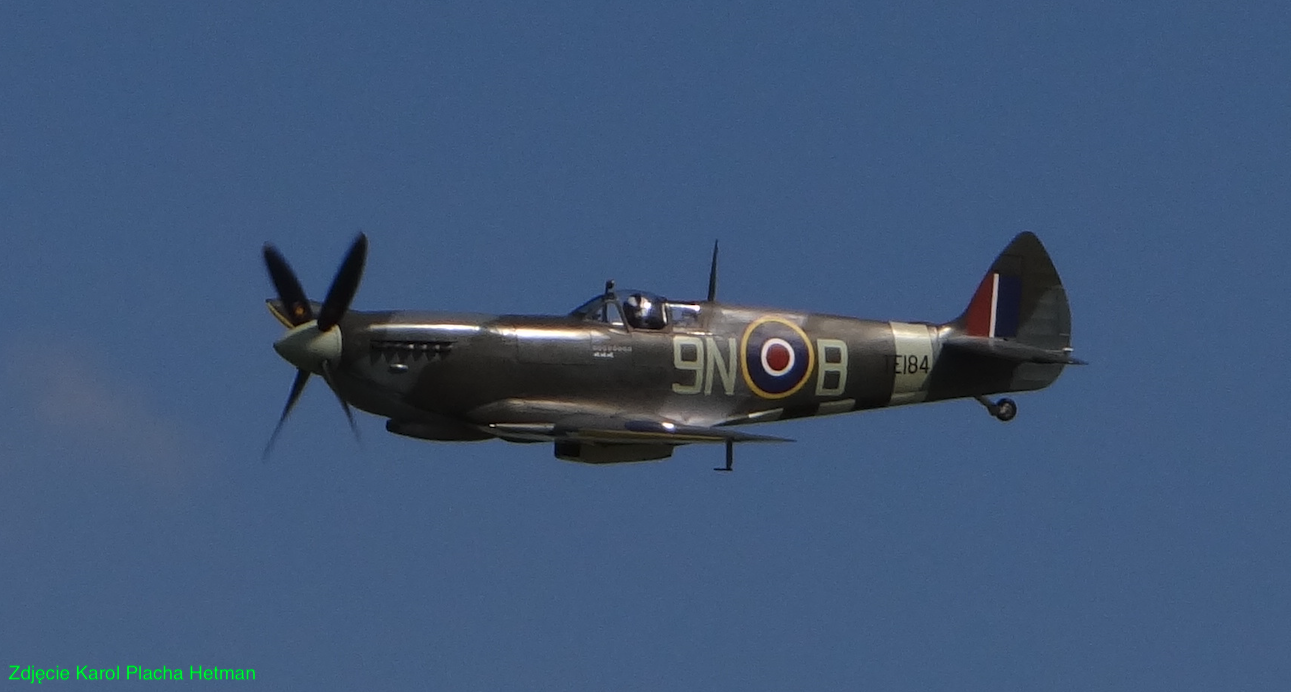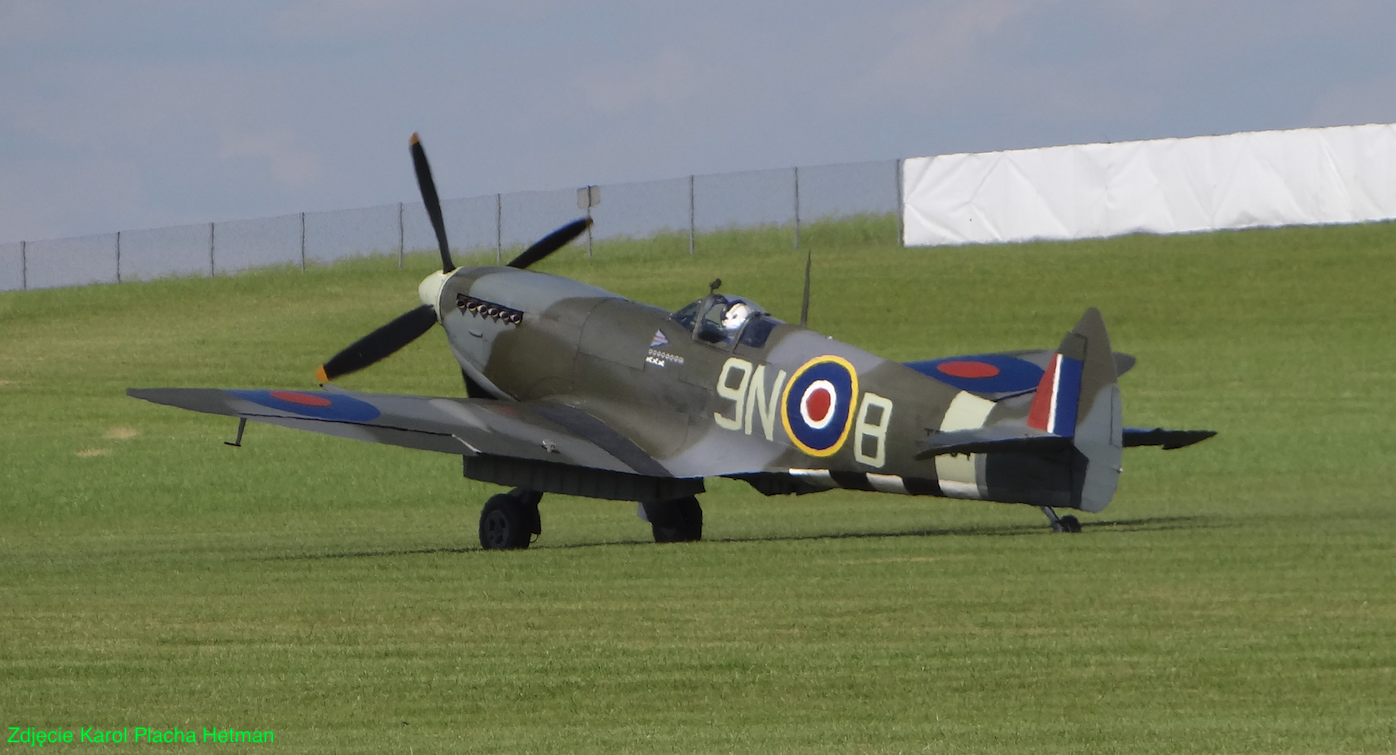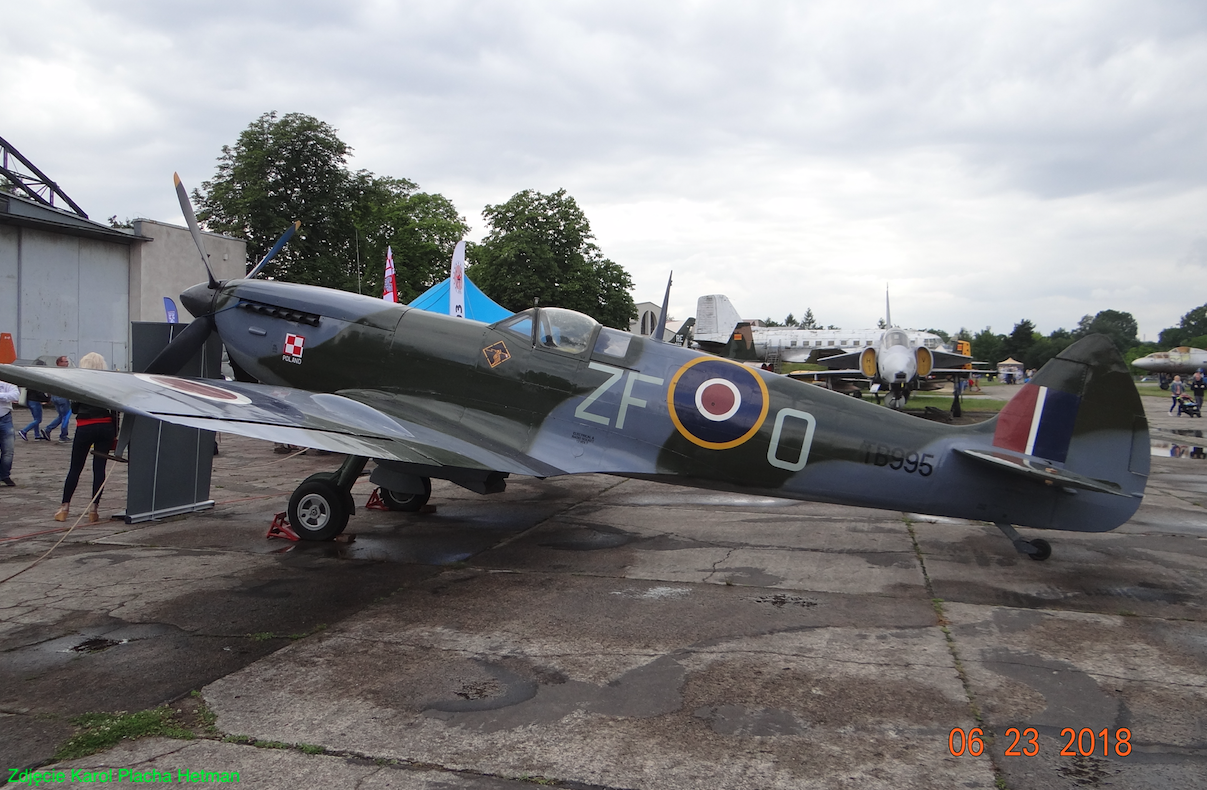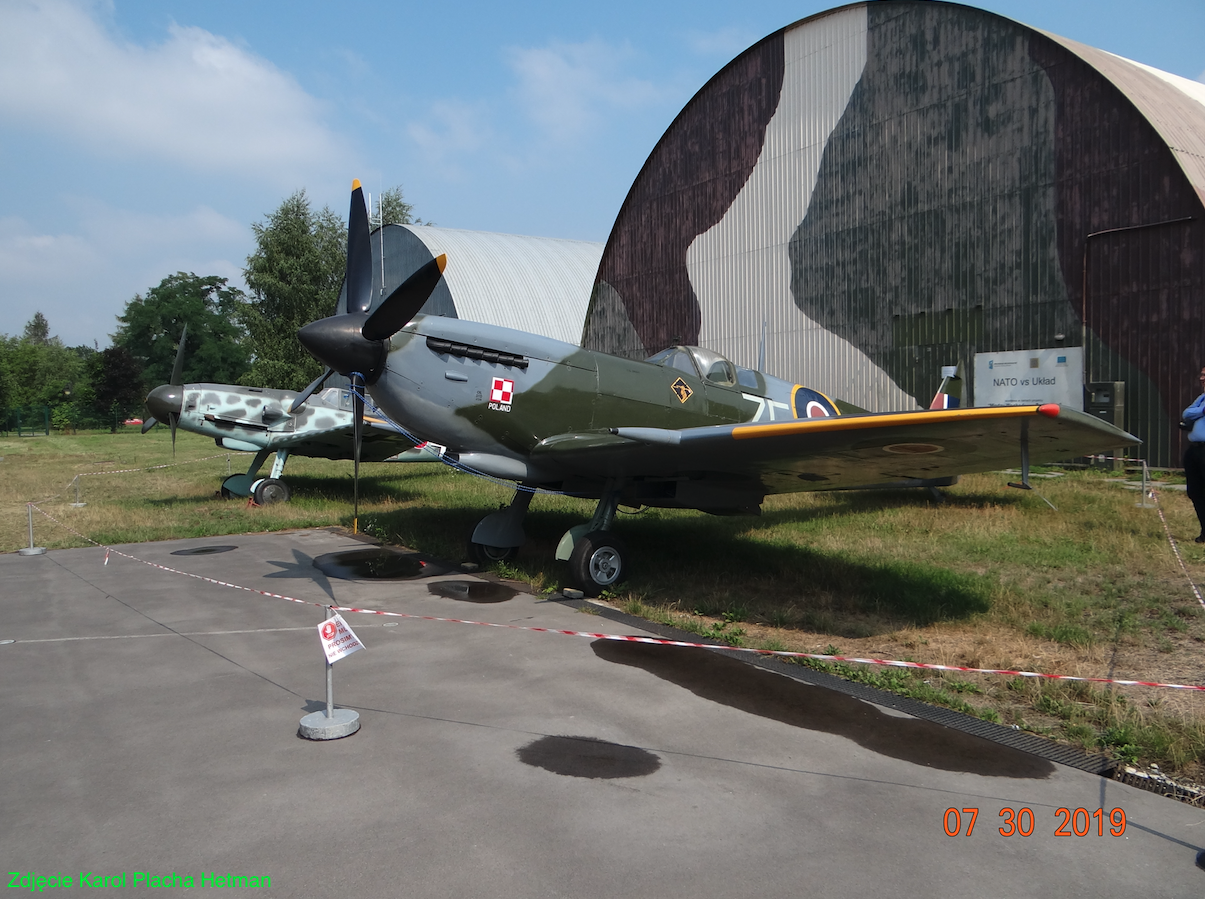Kraków 2023-02-03
Supermarine Spitfire.
The Supermarine Spitfire is the best fighter aircraft of World War II. Hundreds of Polish pilots fought on these planes on various war fronts. The aircraft is single-engine and single-seater. It was developed by Supermarine in Southampton, England. The prototype was flown on March 5, 1936. Production lasted from 1937 to 1948. 20,351 were built. The propulsion of the aircraft is a 12-cylinder liquid-cooled Rolls-Royce Merlin engine, which moved a 4-blade propeller. Engine power 1,030 hp.
The history of the Supermarine Spitfire aircraft began with the construction of record-breaking seaplanes, which were designed by engineer Reginald Joseph Mitchell. Based on the requirements of military aviation, a fighter aircraft was developed as the Type 224. The airframe was all-metal, but the control surfaces were covered with fabric. Classic low-wing layout. Three-support landing gear, retractable with a tail wheel. This plane in 1935 was called Spitfire. Work on the plane continued. Efforts were made to improve performance, and so another variant, the Type 300, was created. The engine was changed to Rolls-Royce Merlin II, with a power of 1,030 hp. Much work has been done on the engine cooling system.
The first order placed by the British Air Ministry was 310 examples. The Supermarine Spitfires entered service with the RAF in June 1938. The aircraft was instrumental in defeating the Axis powers. After World War II, Supermarine Spitfires were in service with many countries until the 60s.
Supermarine Spitfire LF Mk.XVI E
Supermarine Spitfire LF Mk.XVI E, in the collection of MLP in Krakow, was built in 1944. The plane went to Canada to 421 Squadron, registration AU-Y. In 1956, the aircraft was transferred to the RAF Museum in Hendon. The plane was rented for war movies. In 1977, the aircraft was handed over to MLP in Kraków (then the Museum of Aviation and Astronautics). Currently (2023), the aircraft is presented in the colors of the Polish 303rd Krakow Fighter Squadron, with the markings TB995 ZF-O.
T-T Supermarine Spitfire data:
Span 11.22 m. Length 9.11 m. Height 3.47 m. Bearing area 22.48 m2. Curb weight 2,182 kg. Take-off weight 2,624 kg. Maximum speed 582 km/h, at an altitude of 5,790 m. Cruising speed 338 km/h. Rate of climb – time to climb to 6,096 m, 9 min 24 seconds. Ceiling 9,723 m. Range 636 km. Armament: Initially eight 7.69 mm Browning machine guns. Armament of subsequent versions: 2 Hispano Suiza 20 mm cannons and 4 Browning machine guns cal. 7.69 mm.
T-T Supermarine Spitfire LF Mk.XVI E data:
Span 9.93 m. Length 9.54 m. Take-off weight 3,400 kg. Top speed 650 km/h. Ceiling 12,900 m. Range 690 km. Armament: 2 x 20mm British Hispano cannons, 2 x 12.7mm Browning machine guns. Suspended armament: 2 x 113 kg or 1 x 227 kg bombs. Packard Merlin 266 12-cylinder in-line engine, 1,700 hp (1,250 kW).
Written by Karol Placha Hetman




